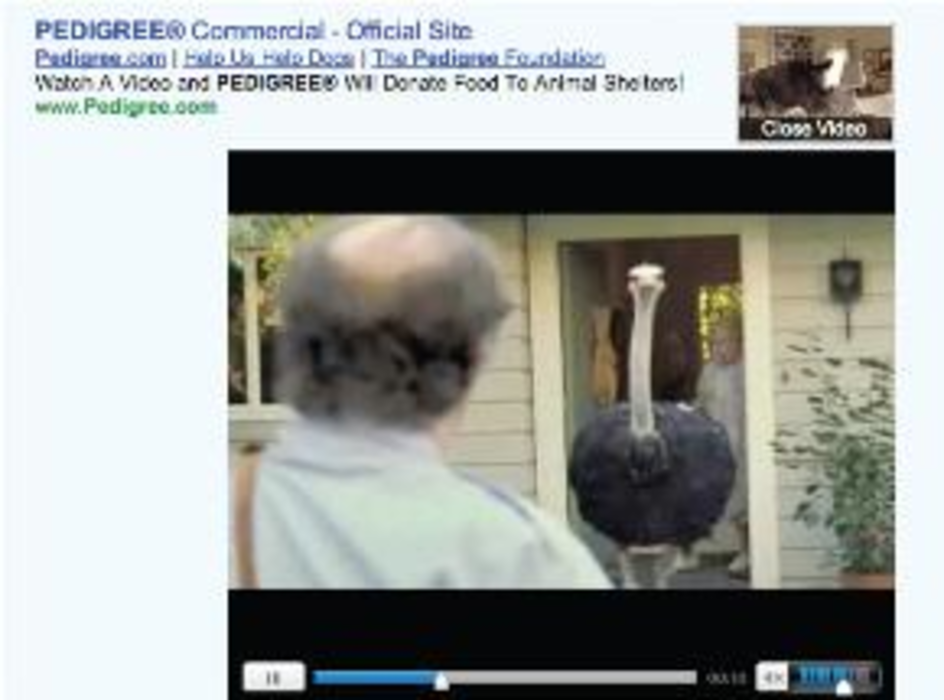In the first major change to its search technology since Carol Bartz took the helm as CEO last month, Yahoo is offering advertisers the ability to run images and video alongside text in paid search results. The program, called Rich Ads in Search, is currently being offered to brands by invitation only and is set to roll out in the next few months. It was announced in a blog entry February 19.
“Since Yahoo has been experiencing increased demand from advertisers for performance-driven offerings, we’ve been working with them to aggressively launch or expand our offerings,” said Tim Mayer, VP of search monetization and distribution at Yahoo, in an e-mail to DMNews. “Rich Ads in Search is an example of this.”
The expandable video ads are currently being used by big brands including Pepsi, Pedigree, SoBe, and Esurance on trademarked keywords in a standalone ad unit, according to Yahoo.
“For brands that have a regular budget for search spending with us, there is an additional monthly fee flat fee determined by the value of their branded keyword terms,” said Kristen Morquecho, director of corporate communications for Yahoo. “The cost of terms can vary in value.”
“Yahoo is looking to innovate and offer advertisers and consumers something they’re not getting from Google, which is exactly what they need to do,” said Nate Elliott, principal analyst at Forrester Research.
When asked about the impact of the launch on competitive marketplace, both Google and Microsoft suggested that they were pursuing similar technology.
Google had no official comment on the news, but referred DMNews to a November 17, 2008 blog post that said, “…over the next few months, you’ll see us continuing to experiment with new ads in new places.”
Meanwhile, James Colborn, director of product marketing at Microsoft Advertising, said, “At Microsoft we believe that image ads are a key and integral part of a customer’s media mix. Over the coming months, we will launch similar technology.”
According to ComScore, Yahoo’s search engine market share was up .5%, to 21%, between December 2008 and January 2009. Google was down .5% to 63% during the same period.
However, Mayer was cautious. “It’s challenging to quantify this program impacting our market share,” he said.
Reid Spice, director of search media strategy at iCrossing, said he believes quite a few of the agency’s clients would at least be interested in testing these types of ads.
“In this economic climate, our clients are interested in testing anything that would potentially improve [search] performance. This definitely falls into that bucket,” he said, calling the move a “bold step forward.”
Elliott is more skeptical. He compared the new Yahoo technology to Branded Response enhanced listings, which were launched by Ask Jeeves in 2001.
“What you had was a user clicking because it caught the user’s attention, even though it might not be exactly what they were looking for,” he said. “Click-through rates are interesting, but advertisers are primarily interested in the ROI.”
But Elliott went on to say that if this proved to be cost efficient, brands may choose to better diversify their search budget. “No one needs to convince [brands like] Coke to advertise on Yahoo, but getting a bigger share of the search budget is key [for Yahoo].”








